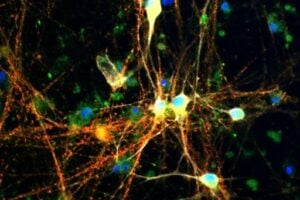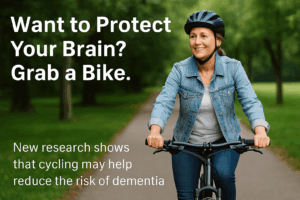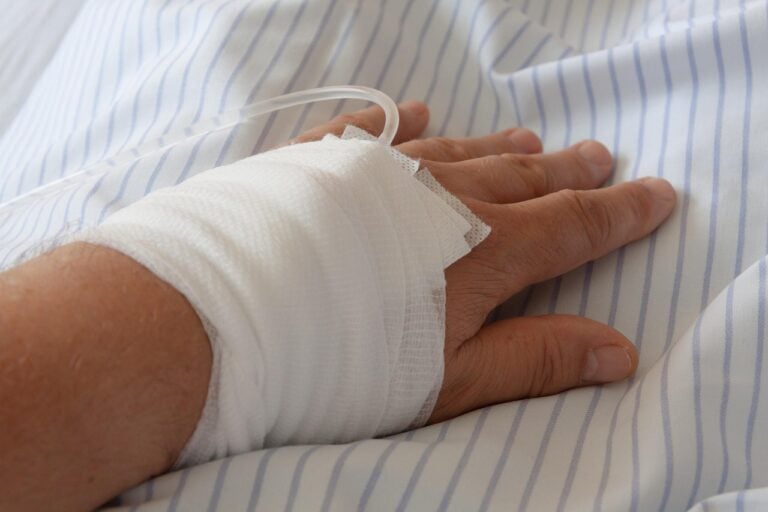UCLA researchers found active people build 5% more gray matter in their brain.
“People really want to know what they can do to reduce their risk of Alzheimer’s disease,” said Dr. Cyrus Raji of the University of California in Los Angeles, who presented his team’s findings to a meeting of the Radiological Society of North America.
The study shows people who are most active have 5 percent more gray matter than people who are least active. Having more gray brain cells translates into a lower risk of Alzheimer’s disease, other studies have shown.
Dr. Raji commented on the study, “This shows it is easier than you think.”
Cyrus Raji, M.D., Ph.D., radiology resident at the University of California in Los Angeles, and colleagues recently examined how an active lifestyle can influence brain structure in 876 adults, average age 78 years, drawn from the multisite Cardiovascular Health Study. The patients’ condition ranged from normal cognition to Alzheimer’s dementia.
“We had 20 years of clinical data on this group, including body mass index and lifestyle habits,” Dr. Raji said. “We drew our patients from four sites across the country, and we were able to assess energy output in the form of kilocalories per week.”
The lifestyle factors examined included recreational sports, gardening and yard work, bicycling, dancing and riding an exercise cycle.
The researchers used magnetic resonance imaging (MRI) and a technique called voxel-based morphometry to model the relationships between energy output and gray matter volume.
“Voxel-based morphometry is an advanced method that allows a computer to analyze an MR image and build a mathematical model that helps us to understand the relationship between active lifestyle and gray matter volume,” Dr. Raji said. “Gray matter volume is a key marker of brain health. Larger gray matter volume means a healthier brain. Shrinking volume is seen in Alzheimer’s disease.”
After controlling for age, head size, cognitive impairment, gender, body mass index, education, study site location and white matter disease, the researchers found a strong association between energy output and gray matter volumes in areas of the brain crucial for cognitive function. Greater caloric expenditure was related to larger gray matter volumes in the frontal, temporal and parietal lobes, including the hippocampus, posterior cingulate and basal ganglia. There was a strong association between high energy output and greater gray matter volume in patients with mild cognitive impairment and AD.
“Gray matter includes neurons that function in cognition and higher order cognitive processes,” Dr. Raji said. “The areas of the brain that benefited from an active lifestyle are the ones that consume the most energy and are very sensitive to damage.”
A key aspect of the study was its focus on having variety in lifestyle choices, Dr. Raji noted.
“What struck me most about the study results is that it is not one but a combination of lifestyle choices and activities that benefit the brain,” he said.
Dr. Raji said the positive influence of an active lifestyle on the brain was likely due to improved vascular health.
“Virtually all of the physical activities examined in this study are some variation of aerobic physical activity, which we know from other work can improve cerebral blood flow and strengthen neuronal connections,” he said.
“Additional work needs to be done,” Dr. Raji added. “However, our initial results show that brain aging can be alleviated through an active lifestyle.”
Coauthors are H. Michael Gach, Ph.D., Owen Carmichael, Ph.D., James T. Becker, Ph.D., Oscar Lopez, M.D., Paul Thompson, Ph.D., William Longstreth, M.D., Lewis Kuller, M.D., and Kirk Ericson, Ph.D.
Note: Copies of RSNA 2012 news releases and electronic images will be available online at RSNA.org/press12 beginning Monday, Nov. 26.
RSNA is an association of more than 50,000 radiologists, radiation oncologists, medical physicists and related scientists, promoting excellence in patient care and health care delivery through education, research and technologic innovation. The Society is based in Oak Brook, Ill.
For patient-friendly information on MRI, visit RadiologyInfo.org.












I have MCI and noticed I was getting more impaired this summer so I joined the YMCA a few months ago and can see improvement now instead of decline. I participate in 2 exercise classes a day, Monday through Friday.
Thank you for the article, This illness has just started to effect someone very close to our family. We are looking into various ways to stimulate the mind of the person. We have practiced word games and this I believe is making a different.